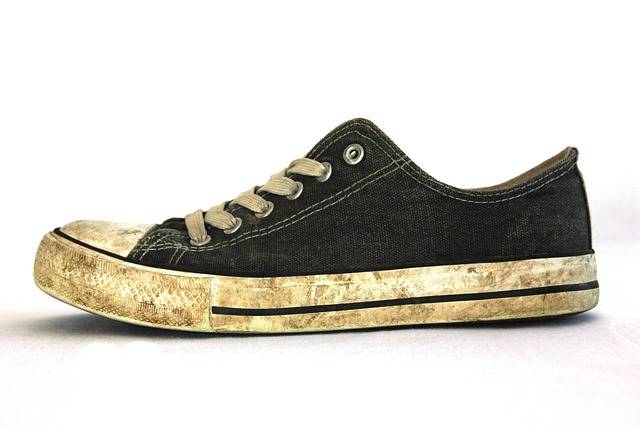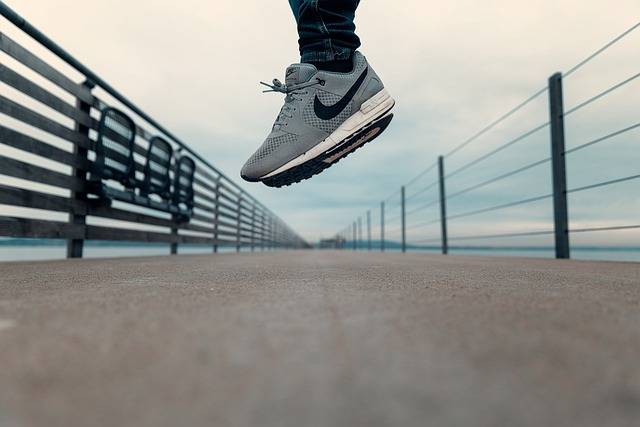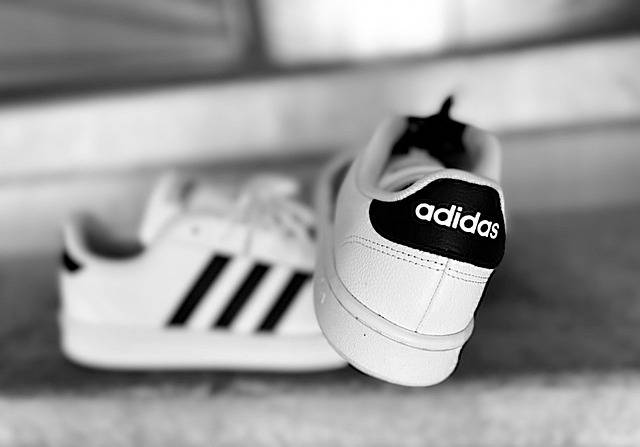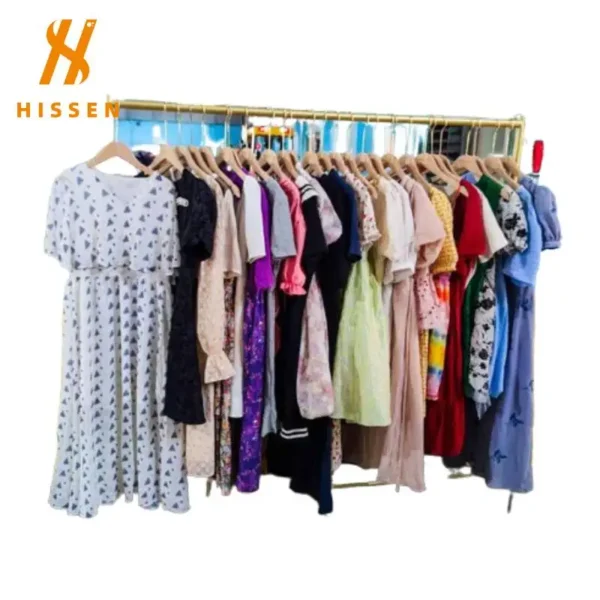I. Gen Z and Millennials Fueling the Used Branded Shoes Market Growth
The rise of used branded shoes is not a sudden trend but the result of a generational shift in values, lifestyle choices, and purchasing behavior. Among the strongest drivers are Gen Z and Millennials, two groups that together form the most influential consumer base in today’s fashion and lifestyle markets. For wholesale buyers and B2B distributors, understanding how these young consumers are shaping demand is critical to staying relevant and competitive.
One of the key characteristics of Gen Z and Millennial buyers is their ability to spot value beyond the “newness” of a product. In the footwear industry, used branded shoes hold an appeal that is different from fresh releases on retail shelves. They offer authenticity, heritage, and affordability without compromising the sense of style that young people seek. Retailers who source these shoes in bulk through reliable wholesale channels are able to respond directly to this cultural shift, stocking inventory that resonates with a new kind of fashion-conscious buyer.
For wholesalers, the surge in popularity of used branded shoes represents more than just a trend. It reflects a deeper transformation in how fashion is consumed, repurposed, and redistributed. The old narrative of second-hand goods being inferior is fading, replaced by the perception of sustainable fashion choices and individuality. This perception creates unique opportunities for B2B businesses that operate within footwear supply chains. By aligning with these evolving values, they can capture loyalty not just from retailers, but ultimately from the end consumers those retailers serve.
The cultural role of authenticity
Younger buyers often define themselves not by the cost of their purchase but by the authenticity of their choices. Used branded shoes carry stories—shoes that have been part of fashion cycles or limited releases that once defined certain styles. To these buyers, owning such pieces is less about consumption and more about expression. For a B2B audience, this means bulk sourcing of used branded shoes can translate directly into retail storytelling. Each shoe has its own character, and wholesalers who position their inventory as “authentic fashion with history” gain an edge.
Value-driven purchases in uncertain times
Economic challenges also play a role. Gen Z and Millennials are more price-conscious compared to earlier generations, but they still prioritize branded fashion. Used branded shoes provide a compromise: the opportunity to access recognizable quality at a fraction of the original cost. Wholesale distributors who understand this demand can partner with retailers to create offerings that balance affordability with style. This is particularly effective in regions where purchasing power is shifting and buyers want value without losing the prestige of owning branded footwear.
B2B positioning in the generational shift
For B2B wholesalers, the growth in used branded shoes is an open invitation to become more than suppliers—they can be strategic partners to retailers. By anticipating trends, curating product assortments that align with youth preferences, and ensuring consistent supply, wholesalers can solidify long-term partnerships. Retailers depend on this foresight to keep pace with changing consumer expectations, and the wholesalers who deliver will be positioned as trusted allies in capturing this market.

II. Shifting Preferences of Young Consumers: Value, Exclusivity, and Sustainability
Understanding why young consumers are drawn to used branded shoes requires a close look at three overlapping preferences: value-for-money, exclusivity, and sustainability. Each of these factors is central to how Gen Z and Millennials make fashion decisions today. For wholesalers and B2B buyers, aligning supply strategies with these motivations is essential to winning in the resale-driven footwear industry. This Guide Will Cover Key Points: Second Hand Branded Shoes Wholesale: A Profit Model Analysis.
Value for money reshaping buying decisions
In the past, value was associated solely with low prices. Today, young consumers define value differently: it means paying less while still enjoying the prestige, design, and comfort of a branded product. Used branded shoes allow them to achieve this balance. For wholesalers, this makes bulk purchasing of pre-owned footwear highly attractive because it supports both price-sensitive retail strategies and profit margins.
By stocking inventory that matches consumer definitions of value, wholesalers help their retail partners secure repeat business. In this way, the second-hand footwear market becomes not just a trend but a foundation for sustainable retail operations. Retailers who can provide affordable branded options, thanks to consistent wholesale supply, earn consumer loyalty that newer brands often struggle to capture.
Exclusivity as a driver of demand
Another key factor behind the rise of used branded shoes is the desire for exclusivity. Many young buyers want pieces that set them apart, not products that anyone can buy off a shelf. Limited edition shoes, discontinued lines, or rare designs available only in the resale market give them that edge. For B2B wholesalers, curating assortments that include such items is a competitive advantage. Retailers who stock these shoes attract younger buyers seeking individuality, which in turn enhances sales turnover and customer engagement.
Wholesale buyers who understand exclusivity can position themselves as reliable sources of high-demand products, creating strong networks with retailers who are keen to meet this appetite for rarity. This exclusivity-based demand is not about chasing fads but about leveraging the natural life cycle of branded products. Once discontinued, many lines gain more value in the resale ecosystem, and wholesalers who capture this timing generate sustained B2B business opportunities.
Sustainability as a lifestyle choice
One of the most profound shifts in consumer behavior is the growing importance of sustainability. For Gen Z and Millennials, environmental awareness is not just an abstract concern—it influences how they shop and which businesses they support. Used branded shoes are inherently sustainable, as they extend the lifecycle of footwear and reduce waste in the fashion industry.
For wholesalers, this presents a powerful narrative that can be integrated into their B2B positioning. Retailers who buy in bulk from wholesalers can market used branded shoes as environmentally responsible choices, appealing to young consumers who want their fashion decisions to align with their values. In this sense, sustainability is both a selling point and a long-term strategy. It creates opportunities for wholesalers to market themselves as partners in the circular economy, strengthening relationships across the supply chain.
Combining motivations for stronger retail outcomes
While value, exclusivity, and sustainability can be seen as separate motivations, they often overlap in a single purchase decision. A young consumer might buy a pair of used branded shoes because they are affordable, rare, and eco-friendly all at once. For wholesalers, recognizing this overlap is essential. Wholesale strategies must consider product selection, messaging, and distribution methods that highlight all three benefits simultaneously. Retailers can then use this positioning to appeal to multiple consumer motivations with one product category.

III. Popular Used Branded Shoes Among Young Consumers and Emerging Trends
The used branded shoes market is not monolithic. Different styles and categories appeal to different consumer preferences, and wholesalers who recognize these nuances can provide greater value to their retail partners. While avoiding specific brand names, we can observe broader categories that consistently perform well among young buyers in the second-hand footwear space.
Classic sneakers as cultural staples
Among the most popular segments of used branded shoes are classic sneaker designs. These timeless models have strong cultural significance and are continuously sought after by young buyers. Wholesalers who secure reliable supplies of these shoes in bulk are well-positioned to serve retailers who cater to fashion-conscious urban markets. Sneakers also benefit from versatility—they can be styled casually or as part of streetwear, making them appealing to a broad consumer base.
Limited-edition and discontinued designs
Another segment that drives consistent interest is limited-edition or discontinued shoes. Young buyers actively look for unique footwear that differentiates them from mainstream shoppers. Wholesalers who specialize in sourcing rare or out-of-circulation models are highly valued by retailers, as these items often carry a sense of exclusivity that elevates retail offerings. By maintaining reliable networks and transparent sourcing channels, wholesalers can establish themselves as trusted partners for retailers aiming to capture this niche.
Lifestyle-oriented casual footwear
Beyond sneakers, casual lifestyle footwear also holds strong appeal. Young consumers are looking for comfort combined with design, and used branded shoes in this category strike the right balance. For wholesalers, bulk sourcing of lifestyle footwear allows retailers to target buyers who prioritize practicality but still want the prestige of branded products. This segment is particularly attractive for markets where casual fashion dominates everyday life. In addition, many young buyers show growing interest in used designer shoes as a way to combine practicality with prestige.
Emerging trend: sustainable fashion positioning
A growing trend is the framing of used branded shoes within the sustainability narrative. Retailers who market their footwear as part of a circular economy attract young consumers who actively seek eco-friendly options. For wholesalers, this means demand for sustainable narratives will only increase, and aligning inventory strategies with these values will strengthen B2B relationships.
Implications for wholesale buyers
For wholesalers and B2B buyers, understanding these categories is not just about stock selection but about positioning. Each segment offers a chance to appeal to different buyer motivations, whether it’s cultural relevance, exclusivity, comfort, or sustainability. Wholesalers who diversify their sourcing strategies to cover multiple categories can offer greater flexibility to retailers. This ensures that retail partners can meet a wider range of consumer needs, enhancing both turnover and customer retention.

IV. Lessons for Wholesalers and Retailers: Meeting the Needs of Young Consumers
The growing demand for used branded shoes among young consumers has profound implications for wholesalers and retailers. This shift is not merely about stocking second-hand footwear; it requires strategic adaptation across supply chains, marketing, and retail engagement. For B2B buyers, understanding these lessons ensures they can capture the rising demand and maintain a competitive advantage in a changing market.
Tailoring assortments to generational demand
One of the first lessons is the importance of tailoring product assortments to match the unique expectations of Gen Z and Millennials. Unlike older consumer groups, younger buyers are driven by emotional and cultural connections to footwear. They value exclusivity, affordability, and sustainability in equal measure. For wholesalers, this means curating bulk orders that reflect these values rather than treating used branded shoes as generic second-hand items.
Retailers benefit when wholesalers provide them with flexible inventory options—classic sneakers for cultural resonance, rare discontinued designs for exclusivity, and casual lifestyle footwear for everyday practicality. The better the alignment between wholesale supply and consumer expectations, the stronger the retail performance becomes. For B2B buyers, sourcing through second hand branded shoes wholesale channels ensures retailers can consistently meet the expectations of young consumers.
Positioning products through storytelling
Another critical lesson is the role of storytelling. Young consumers want to connect with their purchases on a personal level. Used branded shoes inherently carry stories—about their design, the fashion cycle they were part of, or their contribution to sustainable consumption. Wholesalers who package and present their inventory with narratives make it easier for retailers to market these products effectively.
For instance, a batch of limited-edition used branded shoes can be positioned not just as stock, but as “rare finds that reflect individuality.” Retailers can then translate this into compelling campaigns that resonate with their target audience. B2B partners who support retailers in crafting such narratives strengthen their role in the value chain.
Embracing omnichannel strategies
Young consumers are digital-first shoppers. They discover trends on social platforms, research sustainability claims online, and compare product stories across multiple channels. For retailers, selling used branded shoes requires an omnichannel approach that integrates offline retail with digital platforms.
Wholesalers can support this by offering not just products, but digital content that helps retailers market effectively online. For example, wholesalers could provide imagery, sustainability messaging, or insights into fashion trends. In doing so, they position themselves not only as suppliers of stock but as partners in customer acquisition and engagement.
Building trust in the resale market
One challenge often faced in the resale market is consumer trust. Buyers want assurance that the used branded shoes they purchase are authentic and of high quality. For wholesalers and B2B distributors, this means implementing robust quality-control measures and maintaining transparent sourcing practices.
Retailers rely on wholesalers for consistency, and B2B partnerships thrive when trust is prioritized. Whether through rigorous inspection processes, clear categorization of products, or transparent communication about sourcing, wholesalers who establish trust create long-term stability in their retail networks.

V. Capturing the Youth Footwear Trend Through Stable Supply Chains
The guide will cover key points: Build a Stable Supply Chain for Used Branded Shoes. In the fast-moving world of footwear resale, supply chain stability is a decisive factor for success. Retailers cannot meet consumer demand without reliable access to inventory, and wholesalers cannot maintain relationships without consistent sourcing strategies. For B2B buyers, creating and sustaining stable supply chains is the gateway to capturing the youth-driven demand for used branded shoes.
The importance of sourcing diversity
One of the most effective ways to build a stable supply chain is through sourcing diversity. Relying on a single channel or region for used branded shoes creates vulnerability. Wholesalers who develop networks across multiple markets reduce the risks of shortage or inconsistency. By building partnerships with trusted suppliers, recyclers, or aggregators, wholesalers can provide retailers with a steady flow of stock that matches consumer expectations.
For retailers, this means fewer gaps in inventory, more predictability in consumer offerings, and greater ability to capitalize on the ongoing youth-driven demand for resale footwear.
Consistency as a competitive advantage
In the resale footwear market, availability can often determine whether retailers capture or lose customers. A young buyer looking for a specific style will quickly move to another seller if the product is unavailable. For wholesalers, ensuring consistent stock of used branded shoes becomes a competitive advantage.
Retailers prefer to work with wholesalers who can guarantee not just variety, but volume. Wholesalers who can secure regular shipments build credibility and encourage retailers to commit to long-term partnerships. This consistency transforms wholesalers from transactional suppliers into strategic allies.
Leveraging logistics for B2B success
Stable supply chains are not only about sourcing but also about logistics. Timely deliveries, efficient bulk shipments, and transparent tracking systems all contribute to retailer satisfaction. For wholesalers, investing in logistics infrastructure ensures that the used branded shoes they source arrive on time, in good condition, and with reliable documentation.
Retailers operating in the youth fashion space rely on speed. Trends evolve quickly, and delays in supply can translate into missed opportunities. Wholesalers who integrate logistics efficiency into their B2B model give their retail partners the agility they need to stay ahead of shifting consumer preferences.
Enhancing sustainability in supply chain management
The sustainability narrative is not limited to the shoes themselves—it extends to the entire supply chain. Young consumers expect brands and retailers to minimize environmental impact, and wholesalers who adopt sustainable logistics practices add extra value to their partnerships. This could include eco-friendly packaging, optimized transportation routes, or alignment with circular economy principles.
Retailers who market themselves as sustainable rely on their wholesale partners to uphold these commitments. By ensuring supply chains are not only stable but also environmentally responsible, wholesalers can differentiate themselves in a crowded B2B landscape.

VI. Conclusion
The growth of used branded shoes is not a passing phenomenon but a reflection of a generational transformation in consumer behavior. Gen Z and Millennials are driving this demand through their unique preferences for affordability, exclusivity, and sustainability. For wholesalers and retailers, the implications are clear: success in this space requires more than just stocking footwear—it demands strategic alignment with evolving consumer values.
Wholesalers must curate assortments that reflect the cultural and economic realities of young consumers. They must support retailers with compelling narratives that elevate used branded shoes from second-hand products to meaningful lifestyle choices. At the same time, building trust through quality assurance and ensuring supply chain stability are essential to long-term competitiveness in the B2B marketplace.
Retailers benefit most when they work with wholesalers who understand these dynamics and are committed to consistent, sustainable supply. Together, both sides of the B2B ecosystem can capture the growing demand for used branded shoes, transform consumer perceptions of resale fashion, and create profitable business opportunities rooted in generational change. Expanding assortments to include second hand designer shoes further strengthens retailer appeal and supports long-term wholesale growth.
Ultimately, the rise of used branded shoes demonstrates that the future of fashion lies not in endless production but in smarter consumption. Wholesalers and retailers who adapt early to this reality will not only secure their position in the market but also contribute to a fashion landscape that is more inclusive, sustainable, and aligned with the values of the next generation.



